Japanese Traditional Style House Interior Design
You might tend to shy away from traditional design out of fear that it's boring, predictable, stuffy—and it totally can be. But some of its facets are truly interesting, and since it incorporates a lot of antiques, traditional design gives the opportunity to stumble upon some pretty cool pieces. But what exactly makes something "traditional," and just how far back does traditional go? We'll tell you everything you need to know, and maybe you'll be convinced that traditional doesn't always equal staid.
Traditional Design Is Inspired By The 18th & 19th Centuries.
As you would have probably surmised, traditional design is inspired by, well, tradition. It's a timeless style taking cues from the 18th and 19th centuries, incorporating classic art, antiques, and pieces with history. Though you'll most often see traditional design influenced by European decor, it can actually incorporate elements from England, France, or even the far east. "Styles and pieces reflect historical design elements using natural materials and colors," says interior designer Erin Gates.
This content is imported from {embed-name}. You may be able to find the same content in another format, or you may be able to find more information, at their web site.
It Strives For Harmony And Order.
True, traditional designs orderly aesthetic can feel boring and staid, but it's predictable for a reason. Consistency is key, as traditional design seeks to create a calm, orderly space, so furnishings will match, symmetry is huge, and everything seems to just go together. Wild and chaotic do not jive with traditional design.
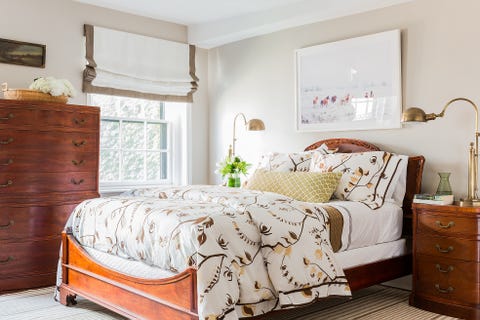
Courtesy of Erin Gates Design
See more at Erin Gates Design.
Dark, Warm Tones Define The Color Palette.
In the traditional design, you'll typically find neutral walls (it is predictable, after all), but color totally has a place. Art, textiles, and decor accents can help pop a room, and dark, rich jewel tones are most commonly used. Think red, brown, green, and plenty of dark wood. "Palettes can be bold and saturated or pale and soft, but tend to be welcoming and not jarring or too graphic," Gates says.
Traditional Furniture Is Fit For Royalty.
Because traditional design is inspired largely by 18th-19th century England and Europe, you'll see a lot of regal influence in the furniture. Furniture is heavy and a bit ornate, like clawfoot tubs, tufted upholstery, and carved wood. One of the defining pieces of the design is the Queen Anne chair, an armchair with curved lines, minimal ornamentation, a cushioned seat, and cabriole legs.
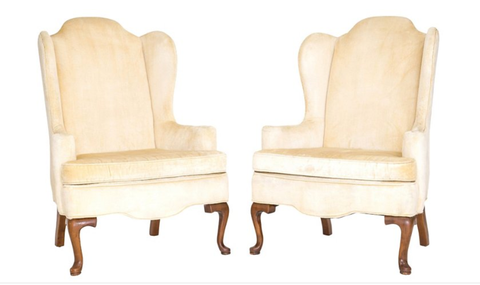
Courtesy of One Kings Lane
BUY NOW $795, onekingslane.com
Another popular furniture style is wingback. This is a chair with a high back, wooden legs, and winged sides. Though you'll often see it pop up in mid-century modern design, it actually originated in traditional.
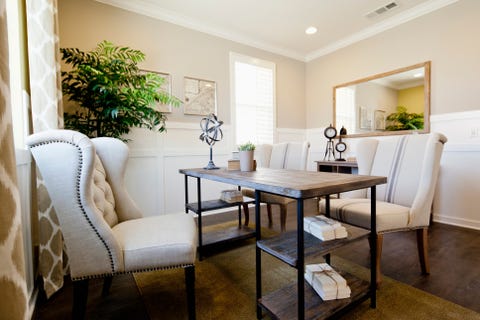
Eric Hernandez Getty Images
It's All In The Details.
Since order and consistency are essential, character comes in through details. Accessories are grand, like candle holders, vases, and chandeliers, and china, silver, and gold are commonly used. You'll find architectural details like crown molding, columns, and wood-paneling used through traditional design, which add a bit of opulence to a room without looking too ostentatious. Rooms are often centered around a focal point, like a fireplace or oil paintings.
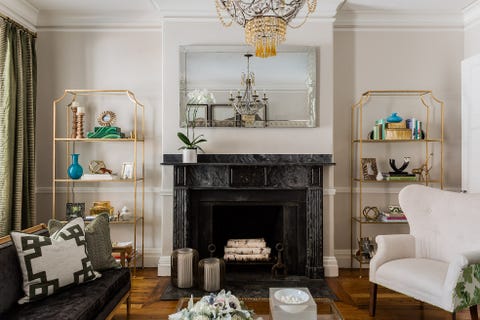
Courtesy of Erin Gates Design
See more at Erin Gates Design.
Traditional Fabrics Are Heavy And Ornate.
You won't find blinds or bare window coverings in traditional homes. Drapery and valances are classic, usually with heavy curtains. Upholstery, whether for curtains, pillows, or furniture, tend to favor high-end fabrics like silk, velvet, and leather, and bold pattern comes in the form of damask, plaid, or paisley. Many fabrics go one step further with trim. "On drapes, pillows, or upholstered goods—trim adds that little extra detail that shows that something was thoughtfully made," Gates says.
"The push-pull you get from mixing modern and traditional goods can be really enticing in a space."
It Can Totally Hang.
Traditional design in full-force can look a bit dated, but it's not an all-or-nothing design style. You can definitely incorporate modern elements into traditional design, or vice versa. "Incorporate some traditional patterns into pillows—stripes and florals being a nice mix. Or work an antique style chest into a living room," Gates says. "The push-pull you get from mixing modern and traditional goods can be really enticing in a space." The blend of modern and traditional is what keeps the design style from feeling too fussy.
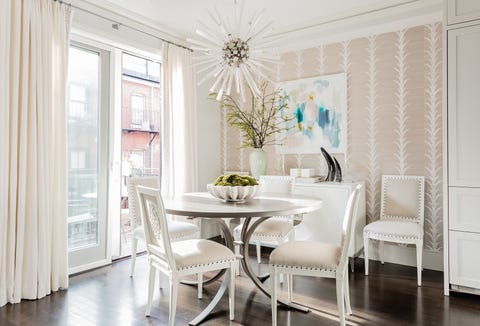
Courtesy of Erin Gates Design
See more at Erin Gates.
For All Of Its Predictability, It Feels Like Home.
Minimalism or industrial design are instant wins if you want to feel cool, fresh, and trendy, but for a classic, homey feel, traditional decor nails it. Along with the predictability comes a sense of comfort, familiarity, and accessibility. Nothing will really surprise you or catch you off guard, but, you know what they say—there's no place like home.
Shop The Traditional Style

Maysonet Accent Armchair
Lark Manor wayfair.com
$354.99

Boothby Round 42
Three Posts wayfair.com
$246.99

Vita Throw Pillow
Ophelia & Co. wayfair.com
$29.99

Pando Wingback Chair
Lark Manor wayfair.com
$247.20
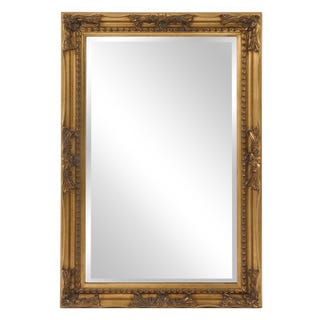
Accent Mirror
Astoria Grand wayfair.com
$187.99
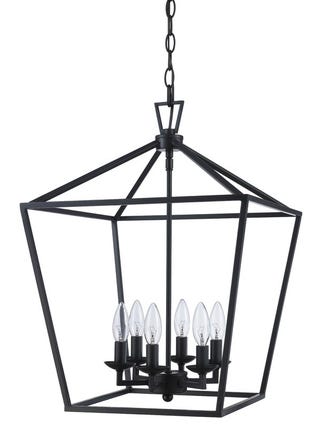
Laurel Foundry Modern Farmhouse Pendant
Laurel Foundry Modern Farmhouse wayfair.com
$155.90

Gaskins Camel/Cinnamon Spice Area Rug
Charlton Home wayfair.com
$35.99
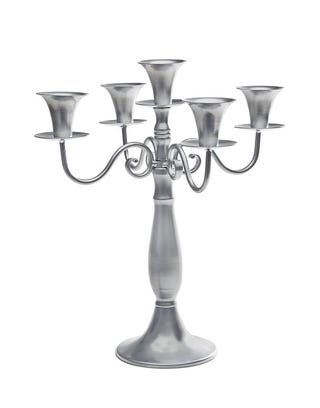
Metal Candelabra
Three Posts wayfair.com
$31.99
Follow House Beautiful on Instagram .
Sienna Livermore Commerce Editor Sienna Livermore is a commerce editor at Hearst covering best-selling products, home items, fashion, beauty, and things you just can't live without.
This content is created and maintained by a third party, and imported onto this page to help users provide their email addresses. You may be able to find more information about this and similar content at piano.io
Japanese Traditional Style House Interior Design
Source: https://www.housebeautiful.com/design-inspiration/a23611149/traditional-design/
0 Response to "Japanese Traditional Style House Interior Design"
Post a Comment